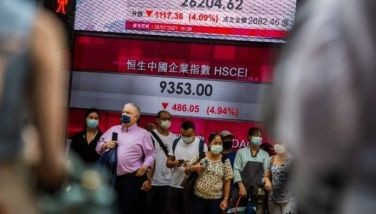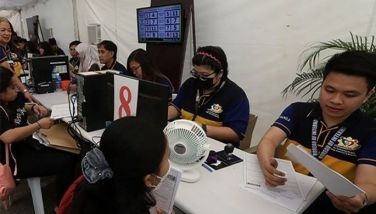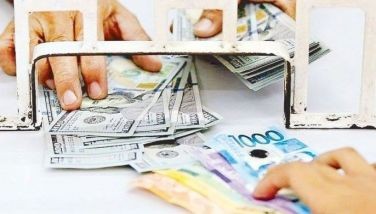Filipinos deserve better lives
Malacanang should not have been that quick at dismissing a congressional proposal to lower income tax rates.
It was Marikina Rep. Miro Quimbo, House ways and means committee chair, and his Senate counterpart Juan Edgardo Angara who are pushing for a reduction in both individual and corporate income taxes.
According to news reports, it is the administration’s opposition to the proposal that is preventing Quimbo from endorsing the bill.
Quimbo was quoted as saying that there is no use reporting it out if Malacañang and the Department of Finance (DOF) would oppose it, since President Aquino would just veto it even if the House and the Senate approve it.
The President nevertheless ordered the DOF to review it when Quimbo and Angara explained the bill and its impact on taxpayers, the economy and government revenues.
The DOF has said it would agree to lower income tax provided that lawmakers increase the value added tax (VAT) from the present 12 percent to 14 percent, but the House would not agree to the increase. The finance department’s proposal of course does not make sense because at the end of the day, Filipinos would not be in a better position having more money to spend but having to spend more for the goods that they buy if the VAT rate is jacked up.
The Bureau of Internal Revenue has also suggested the lifting of secrecy on bank deposits and other transactions.
To cut the long story short, Malacanang and the finance department would not agree to reduced income tax rates because it would mean that less revenues for the public coffers.
Congress has even expressed its openness to a compromise by simply adjusting for inflation the present tax brackets, which have not changed since 1997, instead of reducing the prevailing tax rates.
Under the proposed bill, those earning P180,000 and below a year would be exempt from paying taxes, while those who earn from P180,000 to P500,000 would pay nine percent.
Individuals whose yearly income is from P500,000 to P10 million would pay 17 percent, while those with more than P10 million annual income will have to pay 30 percent.
At present, those earning P500,000 yearly are treated the same and are taxed at 30 percent as those earning P50 million annually.
Quimbo explained that there should be higher tax compliance for professionals and entrepreneurs. The income tax rates have remained at their 1997 levels.
Because of the stagnant rates, he lamented that a soldier currently pays 15 to 20 percent income tax when he or she should only pay five percent, while a new teacher who earns P20,000 has to pay as much as 20 percent income tax. This, Quimbo said, is simply not right because the purchasing power of P20,000 now is not the same as before.
While it may be wishful thinking to believe that there is a way to convince this administration to change its mind about the income tax rate reduction, the different presidential and vice-presidential hopefuls should look into this matter seriously and tell us whether or not they will support such measure.
We have always subscribed to the lifeblood theory – that taxes are the lifeblood of the government and their prompt and certain availability is an imperious need (CIR v. Pineda, 21 SCRA 105).
But it is also equally true that since taxes impose such a heavy burden on the people (both natural and juridical persons), it is government’s duty to make sure that taxes are spent wisely, that leakages are plugged, and that collections do not find their way into the pockets of corrupt public officials.
In the case of Singapore, the fundamental tenet of its tax policy is to keep tax rates competitive both for corporations and for individuals as well. According to the Inland Revenue Authority of Singapore, keeping corporate income tax rate competitive will help the country to continue to attract a good share of foreign investment. Keeping individual rates low, on the other hand, will encourage Singaporean people to work hard and will also make risk-taking worthwhile and encourage entrepreneurship.
Investors turn to Singapore for establishing their operations largely due to the country’s tax regime which is well-known for its attractive corporate and personal income tax rates, tax relief measures, absence of capital gains tax, one-tier tax system, and extensive double tax treaties. (www.guidemesingapore.com)
Personal tax rates range from zero to 20 percent. The first $20,000 has a zero tax rate while the next $10,000 is taxed two percent. The next $10,000 has a tax of 3.5 percent while the succeeding $40,000 is imposed a 7 percent tax. The rest of the structure is as follows: tax rate on next $40,000, 11.5 percent; next $40,000, 15 percent; next $40,000, 17 percent; next $120,000, 18 percent; tax rate on above $320,000, $20 percent.
Singapore $20,000 is roughly P932,000 in yearly income that is taxed at a zero rate. In the Philippines, P500,000 and above is taxed at a rate of P125,000 plus 32 percent of the excess over P500,000.
In the case of the corporate tax rate, Singapore imposes an 8.5 percent rate on corporate profits for up to 300,000 SGD while those above 300,000 SGD are taxed 17 percent. It follows a single-tier corporate tax system where tax paid by a company on its profits is not imputed to the shareholders so that the dividends the latter receive are tax free.
In contract, the Philippines taxes domestic corporations at a rate of 30 percent on their net taxable income from all sources.
Meanwhile, Singapore follows a territorial basis of taxation which means that companies and individuals are taxed mainly on Singapore sourced income. Foreign sourced income (branch profits, dividends, service income, etc.) will be taxed when it is remitted or deemed remitted into Singapore unless the income was already subjected to taxes in a jurisdiction with headline tax rates of at least 15 percent. (guidemesingapore.com)
To increase the resilience of taxes as a source of government revenue, goods and service (GST) was introduced in 1994. The current GST rate is 7 percent. The balanced mix of tax on consumption and income reduces the vulnerability of revenue intake to adverse changes in economic conditions and strengthens the resilience of Singapore’s fiscal position. (ibid)
But Singapore did not start this way. It was only in 1987 that Singapore lowered corporate tax rates from 40 percent to 33 percent. It was further reduced to the current 17 percent cap beginning 2010.
It is therefore not surprising that Singapore has remained the best place to do business in.
As already mentioned, Singapore wants its corporate income tax rates competitive so that it can attract foreign investments. Meanwhile, if personal tax rates are low, there is an incentive for the people to work hard, take more risks, and become entrepreneurial.
This is something that our leaders, both present and future, should seriously consider if we want to give Filipinos a better quality of life. What does it say about us as a nation when government officials own several luxury cars and live in plush subdivisions while our low and middle-income earners suffer daily from taking our shabby rail transit systems to get to work, receive paychecks that are reduced tremendously by taxes withheld by their employers, and could hardly make ends meet, all the more send their children to school and save enough funds to build their own homes.
For comments, e-mail at [email protected]
- Latest
- Trending


























